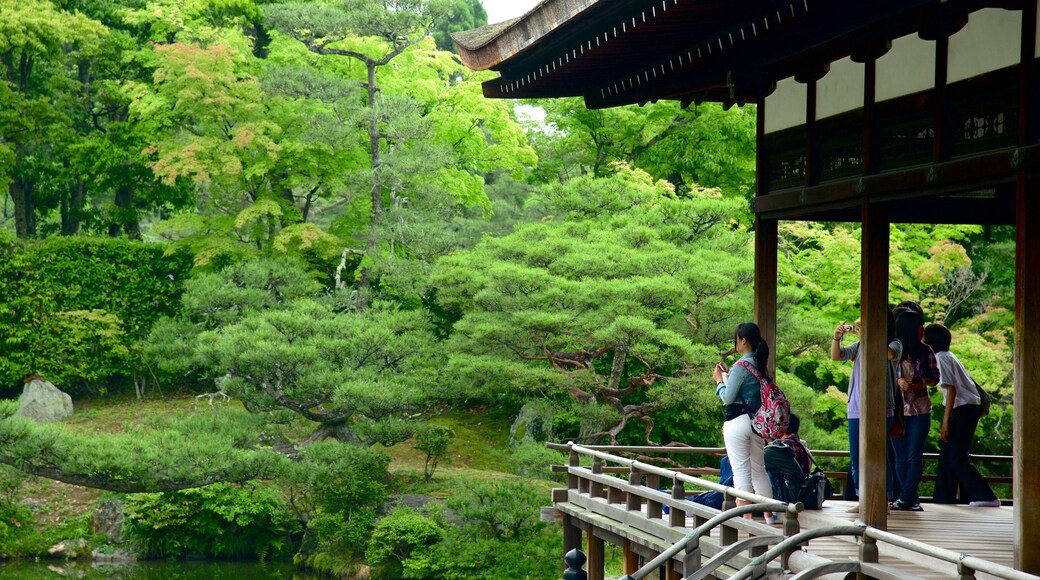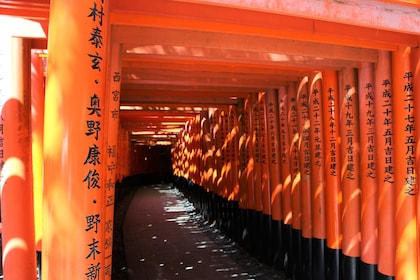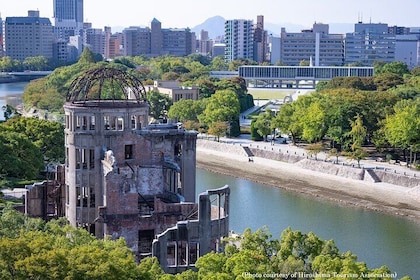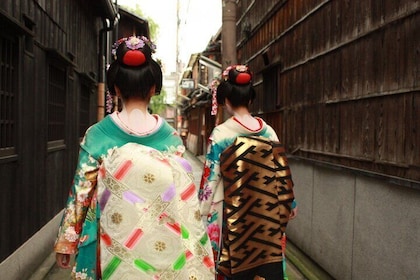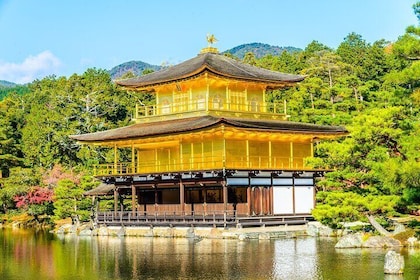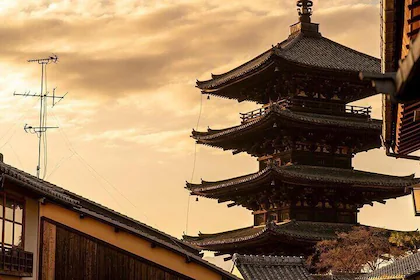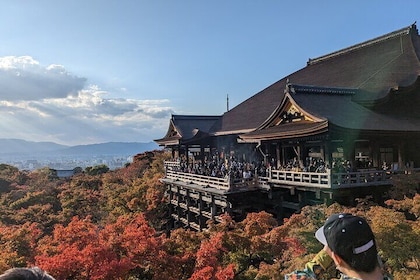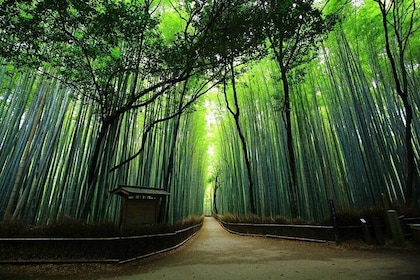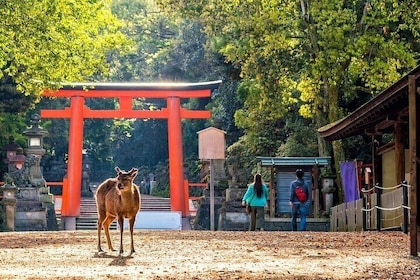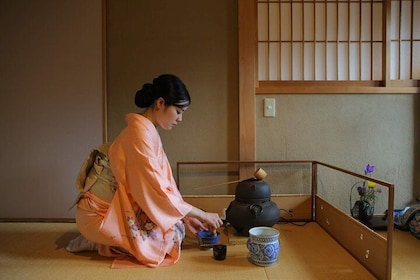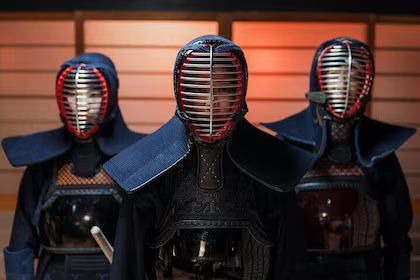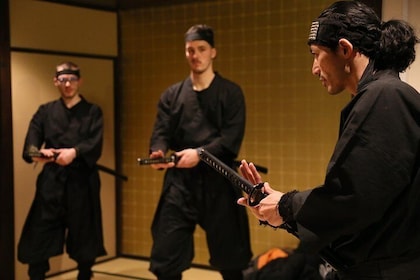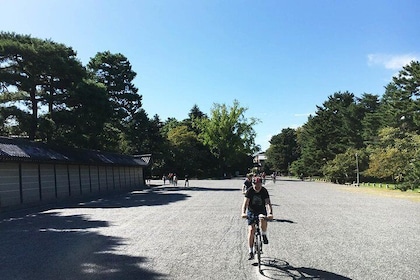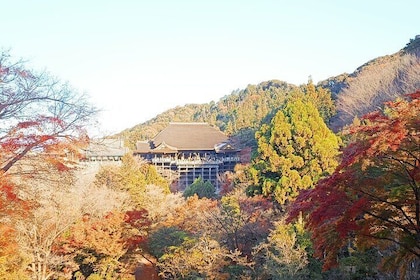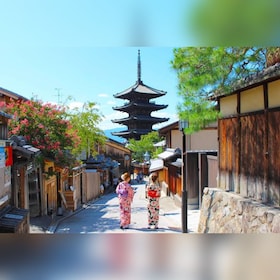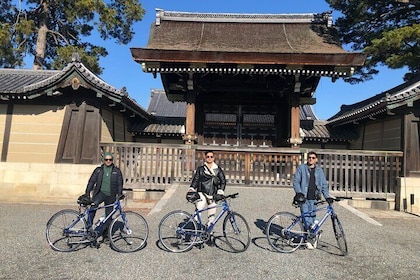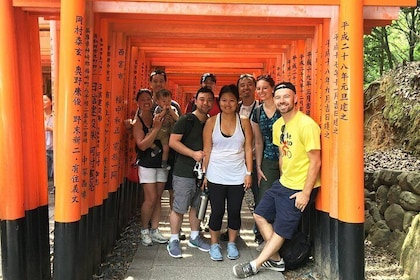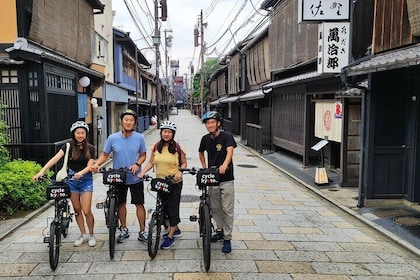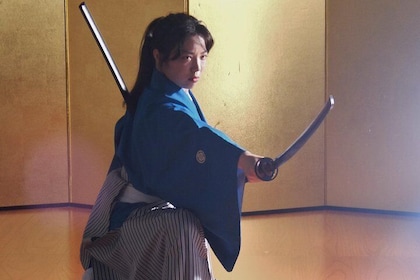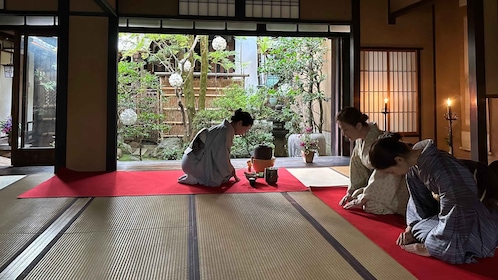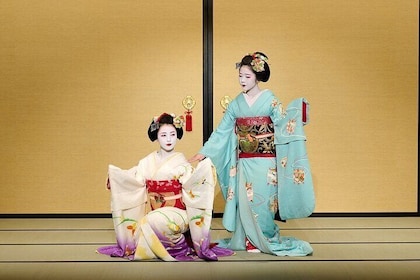The Ninnaji Temple is the head temple of the Omuro School, a sect of Buddhism. As such, it leads the way in traditional Japanese design. Its highlights include a five-story pagoda, a golden hall and an orchard of dwarf cherry trees. Inside the temple, which was built in the year 888, painted screen walls and ancient artifacts are featured. The shrine’s breathtaking garden is typically ornate, with elaborate walls and a vibrant environment. This World Heritage Site is a great spot for an off-the-beaten-track discovery.
Amble through Shinden’s North Garden for a slice of nature. Green trees with occasional drops of autumnal color sit around a charming pond. Visit the temple in April, cherry blossom season, to make the most of its famous Omuro cherry trees. Enjoy the peacefulness found in Shinden’s South Garden with its perfectly raked sand and pebbles. Take photos of the five-story pagoda with the Zen gardens in the foreground. A wooden bridge connects each part of the structure.
Explore the Goten building where the head priest once lived. It is in the style of an imperial palace with painted sliding doors. Enjoy the golden hall for its extravagance. Sleep over at the Omuro Kaikan Hall and attend the morning service with monks. The guest rooms are typically Japanese with tatami mats.
The temple dates back over a millennium to the 9th century, when it served as a home to an imperial family. Fire partially destroyed the structure, but it was rebuilt in the 17th century. It is now part of the Omuro sect of Shingon Buddhism. It is open year-round, and there is a charge to enter the Treasury Hall and the cherry blossom area.
The Ninnaji Temple is located in the northwest of Kyoto. The Ryoan-ji Temple and the Golden Pavilion are nearby. You can get a bus or train from the JR Kyoto Station to the temple, a trip which should take around a half hour.
